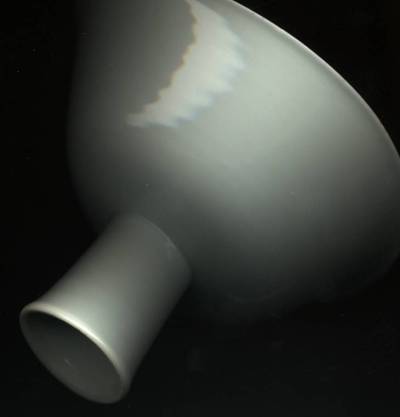
This page is only one of many thousands of Gotheborg.com Help and Information Pages, offering specialized knowledge on Chinese and Japanese Porcelain, including a Glossary, Q&A, Chinese and Japanese Porcelain Marks, Chinese Porcelain Exhibition and Excavation reports etc. For personal help and far more information, join our Discussion Board or use 'Ask a Question' for quick email consultations. For full text and better navigation, use a full-screen device rather than a mobile phone, that offers only limited content.
I've been rereading the entries in your Info section (as I learn more, things I passed over before now make sense to me).
In several places you refer to the "high quality of the paste" (e.g., in a Kangxi piece). What does this mean and how can one determine paste quality?
 The easiest way to determine the quality of the paste is actually just to compare the whiteness of the paste with another porcelain piece. The whiter the better.
The easiest way to determine the quality of the paste is actually just to compare the whiteness of the paste with another porcelain piece. The whiter the better.
Next check is for impurities, which shows like brown or black dots.
The quality of the glaze is mostly felt as its softness to the touch. In my opinion a good glaze is one that looks and feels good.
Technical problems is at least to me secondary since it is antique ceramics we are dealing with and some grit and impurities could really be expected in old ceramics.
Finally on this subject I would like to mention that there do is some difference between porcelain glazes up until around the first decades in the 18th century. It is softer. Once you have handled genuine Ming porcelain where this is very evident and experienced this, it will be much easier to distinguish between anything made up until the Qing dynasty, Kangxi period, and all later porcelain.
To the right I have put a picture of a Kangxi period stemcup. Unfortunately it is about as difficult to the describe how good glaze feels, as it is to describe the taste of a good wine. But, from the picture at least the absence of impurities are evident - and - as an extra bonus the absence of brown goo, grit and mud, which is often smeared all over the bases of recent fakes to make them appear old.
Jan-Erik Nilsson